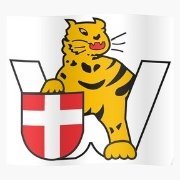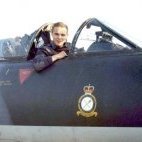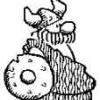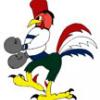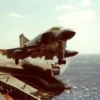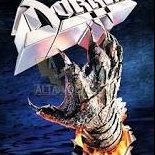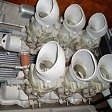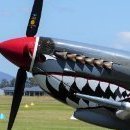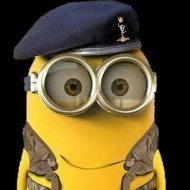Leaderboard
Popular Content
Showing content with the highest reputation on 18/06/21 in all areas
-
Hi Guys, Here are a few pictures of a pair of Eduard Tempests that I have build this year. There is not much to say about the build, except that I followed some advice from Paul Budzik who has a couple of videos on some issues with the wings on his Youtube channel. I also sanded off the raised rivets on the rear fuselage, since I felt they were overscale. The kits are painted with Tamiya and Gunze acrylics. I had to repaint the codes to match the Sky color of the fuselage band, this was a bit of a nuisance. The first is SA D , a series II Mk V: The second is the famous R B flown by Roland Beamont, which is a series I Tempest: Have a nice evening, Christian.33 points
-
Here are some pictures of the 1/32nd scale HPH SB2C-4 Helldiver, that I’ve finished earlier this year. This was a very complex and time consuming build, that took me about three years to complete, working mostly on weekends but with some other projetcs in between. Every step of it’s construction required some scratchbuilding, to add missing details, correcting the kit parts, adjusting parts so that they would fit and be aligned or a combination of them. The lack of comprehensive references for this version of the aircraft made the work much more difficult. Here are some of the key improvements that I’ve made while building it: - Wheel wells: corrected the shape of the ribs that make the internal structure (they should be T-shaped and thicker) and added all the missing hidraulic lines and other details in that area. The kit lacks one rib, compared to the real plane, but I did not bother fixing this. - Bomb bay: added the missing hidraulic lines, mainly internally on each side, and scractchbuilt the arms for the two 500 lb bombs configuration (the kit only has the single 1,000lb bomb configuration). The bombs are from the Eduard Brassin range. - Front cockpit: scratchbuilt the Main Switch Panel, on the right side of the pilot’s seat, and the Armament Switch Panel, below the instrument panel close to the left rudder pedal. These items are very visible in the cockpit, but are offered in photoetch on the kit and are oversimplified. I ‘ve used the drawings of those panels from the pilot’s manual of the Helldiver as a reference to make them. Also replaced the kit’s intrument coaming by the correct one, simulating canvas, and added the pulleys of the pilot’s seat, that are missing on the kit. - Turtle deck: scratchbuilt the side walls and replaced the transparency by one vacformed. - Main gear legs: replaced by the G-Factor metal gear for the kit. - Craddle for the twin machine guns, on the rear cockpit: completely scratchbuilt, as the one from the kit is oversimplified. The bodies of the 0.30 cal machine guns and ammo belts are from Gaspatch, and the gun metal barrels from the kit. - Propellers: scratchbuilt the missing cuffs. - Bombs and and HVAR Rockets: aftermarket items from Eduard Brassin and Mk.1 Design, as the rockets that come with the kit are a bit skinny and lack detail. The model was painted mostly using Mr. Color enamels, except for the Interior Green, which is from Xtracolor. All markings were painted using masks that I’ve made in Corel Draw and cut in low tack transfer tape using my Silhouette Portrait. Your comments are welcome. Ivan21 points
-
Hello all. I have just completed this Aeroclub 1/72 scale vacform kit of the Felixstowe, and what a joy it was to do. It was for the 'Anything but Injection' Group Build on this very forum. I love to do kits that give me a 'challenge', and this one was no stranger to 'challenges'! I had a lot of help and advice, and the build log can be seen here if you would like to see how things went (both right and wrong!): I built an interior for it (more of an impression that reality), the model was brush-painted with Humbrol enamels, the white swirls were from an AIMS Decals sheet (72D004), and the rigging was InfiniModels rigging thread. Anyway, here is 'Felix': The swirls transfers did not settle down quite as well as I hoped as could be seen in one or two of the photographs, but it turned out a lot better than if I had tried to paint them! I would like to say a big thank you to @John Aero for producing this kit, it was fabulous! Thanks for looking, Ray19 points
-
German defenses along the normandy beaches were part os the Atlantic Wall fortifications designed to defend Fortress Europa from an allied amphibius invasion. The scene explanatory is an inspection visit by H.Q Officers at one of the many fortified positions established by troops from the 716th Infantry Division along the coast of Normandy. I used the DML 6213 German Staff Officer kit with its binocular is perfect for the scene. Maps are Peddinghaus. All diorama is 1/35 scale. The DML Dragon figures, Ceramic Bunker and Woodland Scenics vegetation are the elements that make up this interesting diorama about a fortification in Normandy. Let's follow up on the result. I made the ceramic bunker and glued with White glue. Painted with acrylics in a color similar to concrete and after a coat de varnish. It was washes with Ammo Mig enamel. More details view of a “Ringstanden”. Tobruks Pits were the most commom type de fortified position in normandy and existed in a wide range of styles. More officially termed “Ringstanden” they were all characterized by a single circular opening for a weapon, most commonly used as Machine Gun pits. I used an MG34 and the figure is Verlinden. In the future I will take advantage of this bunker and make the "tobruk panzerstellung" version which was equipped with a tank turret. In the circular opening I'll place an APX-R turret, initially used on the Heller Renault R-35 tank kit. I used 2 figures from the Dragon 6574 German Warriors set, to reproduce the typical appearance of a soldier belonging to a static division. I chose resin heads with a better facial expression. The 716th was considered a second class unit. The troops in static divisions tended to be older conscripts, averaging 35 years old. They included veterans wounded and also troops suffering from the debilitating effects or younger often with medical problems. While some work, others keep watch. In this view, we have a good disposition of the figures used.. Bunkers were usually practically buried in the ground to hide their profile. As a pattern maker, I preferred to add a trench to give the bunker structure more visibility. In this view we can see (partially covered) the exit door from the bunker to the trench that defends the rear of the position. Note the MG in anti-aircraft repair (Tamiya) and the "Minen" warning. On the bone plate, the written face is placed on the friendly side. In the case of the photo, I just turned the sign just to show what is written...(!) The vegetation and grass are Woodland Scenics. To make the trees (including the trunks of the trenches), I used dehydrated natural branches, collected in the field. After being treated with anti-fungus, they were painted with enamel paint. We avoid using acrylics, because the paint is water-based. There's a bird in the tree! I used the pigeon that comes in the Bronco 3567 Airborne Equipment set. Barbed wire was made using a well known technique. To make the "hedgehog", I consulted a military engineering manual. Cheers, Fábio.18 points
-
Su-25 Frogfoot Trumpeter 1:32 As always model straight out from the box.17 points
-
Built this one OOB.I did no add anything extra.The great eduard kit.It fits almost perfect making this a quick build.Paints used are gunze.The varnishes are vallejo and ak.17 points
-
Hi all This is Hasegawa's 1/48 Fw190A-4, finished in the markings of Oblt. Otto Stammberger's 'Weiss 9' of 4/JG26 in 1943. Stammberger was shot down in this aircraft on 13th May 43, during a dogfight with Spitfires of 331 (Norwegian) sqdn RAF over St Omer. He baled out with a damaged parachute, which did not fully open, so he hit the ground pretty hard and spent the next 10 days in a coma. He did return to combat duty, but after a total of seven victories he ended the war in various staff positions, He became manager of a large department store in Germany after the war, passing away in 2001 aged 81. Painted with various Vallejo and Mig mixes. As always, comments welcome..16 points
-
Hi, This is 1/32 Dragon Messerschmitt Bf-109 E7 coded “S9 DR W.Nr 4964” of 7.ZG 1 in El Alamein Libya during August 1942. I have used Yahu instrument panel and Eduard seatbelts in the cockpit. Paints are Gunze Sangyo acrylics. Decals are from HGW decal set. Happy Modelling15 points
-
Hello Attached are 2 photos of my Revell Spitfire Mk Ia in 1/32. The following changes have been made to the model: Barracuda oil and water cooler Eduard cockpit Fuselage rivets weakened Painted with Gunze acrylic paints. Hope you like the pictures. Best regards Patrick15 points
-
Hi all Here's some photos of my Bf-110 It's a Hobby Boss Easy Assembly finished in Model Master enamels, homemade wash, some pastel chalks, silver pencil and that's about it The kit has flaws....out of scale rear gun, inaccurate and almost non-existent cockpit etc etc But the exercise was simply to try an all black finish and some weathering Along the way I finally found a canopy masking method that works for me consistently and easily Many thanks to Paulo Castro (AKA Armoured Sprue) for his kind feedback, valuable suggestions and encouragement (definitely check out his work) Here's the shots (apologies my camera work is as rudimentary as my modelling skills! 😜)......please let me know if you cant see them I've edited the post (thank you Jackson) please let me know if you still can't see the images Hopefully that's working! Thanks for looking Cheers14 points
-
A couple 1/144thtypes from my shelf of doom unfinished builds. The DH89 is the never released kit fBy John Adams of Aeroclub fame and the DC-3 is the Minicraft kit. First the Drag Rap: DH-89A ZK-AKY of Ritchie Air Services , New Zealand 1950s. Not sure why the gap in the cheat line, I'll have to ask the Old Model Decals chap. Not brilliant but at least after many years languishing in my unfinished works its out to be aired. Looking tiny against the 787! ( in the same scale!!!) Next, the Minicraft DC-3 as CF-IHO of Pacific Western Airlines Canada post war period of around the 1960s??? Decals by Leading Edge. The decals I had were very old about 1990 something and were tricky to get to stay in place. But under normal times the LEM decals are vey good. This last pic has a Anson, tucking itself in among the Dak and Drag Rap, which I had lurking nearby but built a long time ago from the Welsh Models kit. ( not unlike an Aeroclub one). Its quite large against the Rapide and not too much smaller than the Dak!14 points
-
Hi Folks - here's my recently completed Snowspeeder: As with all of the bandai star wars kits I've done, this was a pleasure to build - in fact I'd say that this one was the best yet - absolute beautiful kit. If I was to be critical about anything, I'd say that the pilots where not brilliant but they're still not too bad - and once installed and painted, they certainly look the part. The model was built out of the box and I went with a canon scheme from Empire - which is a first for me - I normally do my own thing - but very happy I went with this. Painted with Gunze Mr Color paints - with Ammo Mig enamels and oils for the weathering. The Bandai Star wars kit stash is growing so plenty more of these little beauties to come Cheers John13 points
-
This is the Italeri 1/48 scale kit modified into the prototype aircraft using the nose of the Heller (ex Occidental) model extended using the exhaust ring from a Italeri A-4 Skyhawk.The tail was converted as it had the skid under the fuselage. Saluti Giampiero13 points
-
i have just finished the new Tamiya kit...it seems my chosen scheme has been done by a few but as it's now flying again i thought i'd do it too......what a superb kit one of my favourite builds the engineering is brilliant i havent built a P38 in a long time but getting things lined up was really easy on this kit Tamiya should take a bow.....and at the same time keep up the great work....oh it's completely out of box......seatbelt decals and all. 201533499_1575448552650511_3629025989285454459_n by paul sabin, on Flickr 192774065_1575448719317161_3164015491386248340_n by paul sabin, on Flickr 193122067_1575448632650503_1195626902941158738_n by paul sabin, on Flickr 194038913_1575448739317159_8598233987479318284_n by paul sabin, on Flickr 196948433_1575448515983848_1715756209736484061_n (1) by paul sabin, on Flickr 198819001_1575448579317175_5791922403302421179_n by paul sabin, on Flickr and i have bought a conversion to do another as an RAAF F4.13 points
-
Early work on the stickers before weathering - Xtradecal for the stars & serials, HGW for the stencils:12 points
-
My Eduard Spitfire is complete. Being one of my favorite planes, I always try my best with Spitfires and this may be my best work yet. If you're interested you can check out my entire building process on Youtube at Of Models & Monsters.11 points
-
Hi All, I just finished my build of the Fine Molds Phantom, in this case the JASDF Kai version. What a beautiful kit, well moulded, superb detail and fitted together wonderfully. My copy came from Frome Model Centre and arrived very quickly. One issue I had was that I took the instructions advice to not use “surfaces primer” too literally and my Tamiya paint was easily scratched during later assembly. I now think they meant avoid sprays like MrSurfacer as the detailing is very fine, but a light waft of Halfords might have been okay. That said, after the joy of building a few modern kits such as this, I’m wondering whether to flog off the stash of “classic” kits, or to pull on that hair shirt and build some! 🤣 Cheers Will11 points
-
10 points
-
While walking past the Guinea pig cage and only two words sum up this picture. FEEEEED MEEEEE And by the way this is daisy10 points
-
Whoa! Hold on. Somebody said "printer". If my experiences of having to share a printer at home with Mrs MF in lockdown are representative, I'd say the hobby is safe, for the following reasons: 1) You are too busy to design and print your model because you have to re-install the printer driver on your wife's computer three times a week. 2) You are too busy to design and print your model because your wife can't print her sofa and needs it for a meeting tomorrow 3) You are too busy to design and print your model because you are trying to cut up and get rid of the four copies of the sofa that have accidentally been printed at 2x life size 4) Your model comes out in a strange mix of blackish pink because all the cyan and yellow got used up printing four 2x life size green sofas 5) You are too busy to try to print your model again because you are attending marriage guidance counselling 6) You can't print your model because you got divorced and your wife got the printer but she insisted you take the dusty old stash with you 7) You pull out one of your four FROG Wallaces and open a tube of plastic cement None of this is true of course, although 1-4 may (cough, shuffle) have been inspired by 2D real life events. And I hope to get to number 7 soon (without 5 and 6). Regards, Adrian10 points
-
It's been 10 days since my last update, my modelling time has been reduced, must be all the things going on in life. Looking through my stash of Eduard kits I found that their early 109G-6 kit(#82113) included markings for the aircraft I'm building. I have been searching the net and books looking for actual photos of this aircraft to prove some differences that are in the profiles I have, two profiles show it with a yellow lower nose and two show profiles show it without. As most other Reich defenders had a yellow lower nose that is how I have painted mine. Here is is shown on the Eduard paint guide, the underside is sprayed with Mr Color RLM 76 and a Tamiya yellow lower nose. The camouflaged uppers is now ready to be sprayed, again they will be Mr Color acrylics, just got to shoe horn it into my busy weekend schedule, 30 square/m of slate chippings to lay, tree stump to dig out and a new fence to put up. Thanks for looking, onwards and upwards.10 points
-
Howdy All, I have finished with building the Launch Rail, and have moved on to greener pastures. The install of the launch rail was fairly easy with a rotator joint and some cabling. The rail sits up over the cab and engines. The lift arms attach under the rails, and the hinge is in the back. That's it. ' doesn't really look like much with the rail down, but with a little help, the young prince has his first rail lift..... Cabling..... All hosed up.......... After the Launch Rail was finished, for now, I moved on to more paraphernalia on "The Other Side". Bwa ha ha.......The end is in site! I had an other store locker, and a cable reel, and more.......still a lot of little items. I also started building the Hoist Crane. Starting at the bottom... This is the bottom end of the Hoist Crane. This has a rotator motor that is used to rotate the crane for loading and unloading. I also built a what? A Launch Chair?... You can see where this is installed to. I can't quite figure it tho. It has a blast shield on top as if somebody is supposed to sit here when the missile launches! It looks more like a lid on a barbi. And that makes sense, if your going to sit there when the missile launches. ? You can see it behind the cable reel. I still need to upholster it. This is where I'm at at the moment with the build. I have started with the Hoist Crane Base and have it installed. I'm ready to start with the crane it's self. I'll be back...........Thanks for watching.10 points
-
I have always liked the Convair 990 Coronado. The big anti-shock bodies in the wings and the long dorsal fin containing avionics gave the Coronado its typical and original looks. In the 1970's I flew a couple of times with the plane in Spantax's colours to the Canary Islands. The flight time was considerably shorter than with other airliners. Coronado was and I understand still is the fastest subsonic jet airliner of the world with a maximum speed of 1000 km/h I built the CV-990 in Swissair's livery from the excellent Authentic Airliners 1/144 resin kit. I ordered the decals from F-RSIN. IMHO this combination is very elegant. As to the modelling of the plane there were no problems and the smaller parts, especially the landing gears were very detailed. I painted the white areas with Tamiya fine surface primer which I then sprayed with Tamiya gloss varnish TS-13. The metal areas I primed with Tamiya gloss black TS-14 and sprayed with Vallejo metal colour-aluminium shade.8 points
-
Ready for critique is my rendition of a P-47D of the 5th Emergency Rescue Squadron. This squadron was based at RAF Boxted in the summer of 1944 and was deployed over the channel to drop life rafts and buoys for downed USAAF airmen. Boxted airfield was in fact in the village of Langham, Essex just outside of Colchester. However an RAF Langham already existed in Norfolk so they adopted the name of the next village Boxted. The airfield originally had B-26 Marauders flying from it. This changed to Mustangs in 1943 and finally the famous 56th fighter group flew from Boxted in 1944/45. This was a change of pace for me as I normally build 35th scale armour but as I live nearby to the village and airfield I wanted to build a model of an aircraft that flew from there. This has been built from the excellent Tamiya 1/48 Razorback kit with added Eduard zoom photo etch and Hannants decals. This was a pleasure to build and was a welcome change from building armour.8 points
-
Once again 502 Abteilung oils were used for the weathering on the “top” of the aircraft. ABT165 faded white was used as a filter along the engine cowl and leading edge of the wings to try and simulate sun bleaching. ABT510 starship filth for the machine gun streaks. ABT002 sepia, ABT005 smoke for the exhaust stains with ABT240 cream brown blended into the centre of these. ABT002 & ABT510 starship filth were used for the fuel staining. The whole airframe will get another matt coat to help protect its current appearance before any further weathering, this will also give me a chance to “sleep on it” to see if any more work is required, currently I don’t think it needs ant more however I’m tempted to enhance/exaggerate the exhaust staining. Next I’ll get to work on the under carriage. until next time as always, any suggestions, criticisms or comments will be gratefully received. rgds John(shortCummins)8 points
-
My second entry to the Less Than A Tenner GB is this; Airfix's Bf109E-4 in 1/48. I used a left-over set of Altmark decals to show her in the colours of Oberleutnant Gerhardt Schoepfel, Staffelkaptain of 9/JG26 in early summer of 1940 when based at Caffieres.8 points
-
I have just completed the 1/72 Ceres - an excellent resin kit made by LiftHere! from Serbia. It is pretty much out-of-the-box but i have added the fuel gauge indicators on the wings either side of the cockpit and the latch for the hopper in front of the cockpit. The leading edge slats are mounted on small staples. The aluminium is Tamiya LP11 and the Dayglo Orange is Mr Color. I could not have done the model to a reasonable standard without the only reference book on the Ceres https://www.amazon.com.au/Commonwealth-Aircraft-Corporation-Ceres-Heavyweight/dp/09945713057 points
-
Hi Folks Cockpit tub and seat complete. The control panel & throttle are from Flightpath, nice quality but the instructions are a lot to be desired. I dry fitted the tub to the front fuselage halves before fitting the control panel and it was spot on. However, after fitting the control panel I have quite large gaps, though it doesn't look like its that thats causing the problem. Will cross that bridge when I come to it and let you know Never been a great fan of this type of picture, taken on a smart phone, as you have very little control. I feel it looks a lot better in the flesh so to speak Will have to get by big camera out and start doing it that way I think. Hope you like so far Take care Si7 points
-
The masts are elongated as best they can and glued. Those at the rear received a metal rod (0.2mm) to keep them in place. In profile all is well: From the front, the floats are not "parallel" to the wings and the bar which connects the two floats makes an arc of a circle (in red). So I started sawing the central mast foot to fix that. .. and finally almost everything came off. I resized and adjusted the poles as well as possible (0.5mm) but there is not much room given their shape. I also stuck the big engine (I wanted to for a long time) He didn't let that go either. It fits under the hood but the rocker arm heads (the part at the end of the rocker arm rod, there are 12 here!) touch the inside of the engine cowl. When you put the engine cover in place, the rocker arms twist. I milled the inside of the hood over and over again but I'm too afraid to drill it out. So I had to remove almost all of the rocker rods. I'll glue them back on after shortening them a bit when I'm calmer. With the hood just installed. Regards.7 points
-
Nice little bits of detail here.... So far this morning. I am off to a neighbouring island today for my second round of Pfizer. --John7 points
-
For those of us who remember cassette tapes there's this masterpiece of advertising: Followed up by this:7 points
-
Hello all! This is my completed 'Anything but Injection' subject, the 1/72 Aeroclub Felixstowe F.2a flying boat. It was a vacform kit, with white metal detail parts, transfers and some injection moulded strut material (for the smaller struts). There was a little scope for a spot of scrtach building, which I took advantage of. The kit-supplied transfers were excellent, but I had to replace the lower wing roundels (one was disintegrating) with a pair from Blue Rider. The white Swirls for the main colour scheme were from AIMS Decals sheet 72D004. Paintwork was Humbrol enamels, brush-painted. The build log is here: The photographs: Thanks for looking, Ray7 points
-
Hi All, My next project will be Tamiya's lovely Spitfire Mk.IXc. The wife gifted me this as a birthday present 18 months ago - I've periodically pulled it out and had a little peek and rapidly put it away again, because I was frankly a little intimidated. I don't normally model in this scale, and I guess I didn't want to risk ruining such a lovely kit. However, with mojo in a healthy place I've decided to give it a red hot go! Here's the box art: This is a very high quality affair, and a very full box! Here's the sprues: That's a lot of plastic! Now although I knew that this would build beautifully OOB, as I did not buy the model (??) I thought I'd indulge in a few extras: The wheels look superb as does the cockpit door (and separately moulded crowbar, which will look lovely in red 🤣). On @shortCummins recommendation I've invested in a Yahu instrument panel (thanks for the tip John!), and I'll be trying out HGW seatbelts for the first time. The kit provides for a number of schemes, including the ubiquitous EN398, Johnnie Johnson's mount. Although I was sorely tempted by this scheme, I wanted to spray the markings, and therefore selected a Montex mask set: The lower scheme depicts MH526, as flown by Pierre Clostermann whilst part of 602 (City of Glasgow) Sqn. I actually want to depict this aircraft: This is MJ586, as flown by Clostermann whilst the squadron was part of 2nd TAF based at Longues-sur-Mer during July 1944. I'll therefore need to adapt the a/c serial and figure out how to represent the kill tally (the squadron and a/c codes also look more compact than the 'other' LO*D - hmmm). The partial worn invasion stripes will also present a weathering challenge! This will not be a quick project and I might have other WIPs running concurrently, but I'm now quite excited to be getting going on this icon - wish me luck! Thanks for looking, Roger6 points
-
Here is my first entry in this GB, and my first Eduard 109 ever! Looking forward to it. I chose the markings of Obstlt Witt as his survival not only of the Hindenburg disaster but also WW2 interest me, plus the fact he survived until 1976 makes the past seem not that far away!6 points
-
Another oldie finished and now weathered lightly,hope you like it: Tks for visiting! Marcus6 points
-
Mozambique Air Force "MiG 21" Story goes Lt Adriano Bomba, a Portuguese speaking MiG pilot, was recruited to defect a MiG-21 to South Africa. What might have been a case of error in translation - on Wednesday, 8th of July 1981 it was not a MiG-21 that entered South African airspace but a MiG-17 with registration number "21". Lt Bomba was intercepted and escorted by two SAAF Mirage F1AZ's to a local air base where the "21" made a succesfull landing. SAAF did not really have a reason to evaluate MiG-17 but was test flown few times anyway before returned to Mozambique. Thanks again @Avgas for bringing this story to my attention, it's interesting stuff and certainly made the build even more interesting And it's just not a story, a MiG-17 "Fresco-A" registration number "21" did defect to South Africa 8th of July 1981 and was flown by Lt Adriano Bomba - but of course the other details are debatable. There are quite a few pics to be found from the internet about this plane and also - what appears to be - somekind of TV news videoy which shows Lt Bomba in the cockpit of this plane and keeping a press conference. Kit: Airfix Mikoyan-Gurevich MiG-17F 'Fresco' (Shenyang J-5) (A03091) Scale: 1/72 Paints: Vallejo Model Air, Vallejo Metal Colour Aftermarket: Berna & Print Scale decals, Eduard Brassin wheels, Eduard PE set, Master pitot tubes & guns Weathering: Oil paints, Tamiya weathering products, Ammo Mig weathering products, A lovely kit by Airfix, the best MiG-17 around in this scale. Second one I built, first one was OOB, this with some aftermarket stuff. The intake ring can give you some trouble but other than that it should be quite hassle free build. This Airfix kit offers the MiG-17F "Fresco-C" while the subject was MiG-17 "Fresco-A". Biggest difference is the tail shape around the exhaust and the shape and size of the air brakes. So this part of the build was scratch built/altered. Also added few of the antennas that were missing, mainly the T-shaped antennas under the wings and small (what must be a) aux pitot tube on the right side of the nose. Also added nose wheel down indictator rod on the left side of the nose as the main wheel indicators were already included on the wings. Also some panel line/detail changes such as moving the signal flare launchers from the tail to the rear of the fuselage. (Thank you @RidgeRunner for mentioning few of the details that needed to be changed, I hope I remembered them all ) It was quite PE heavy build with the air brakes (which had to be cut open), wheel well covers (which ended up looking real good) and cockpit details. Berna decals were pretty thick and awful but offered better details (mainly on the insgnia) than Print Scale so they were used instead. "21" is from the Print Scale sheet. You can see more of the actual build process here:6 points
-
Not my usual scale but I have just completed this for someone. The kit as we know dates back to 1970 and this re issue in the Classic range has all the signs of an old tool. I have never done this one before so was quite fun tucking in to it. Lots of pairing down of mould seams and flash was essential to get good fits. I didn't think much of the rudder pedal assembly as there is hardly anywhere for it to fix too so I left it out. I fixed a piece of plastic card cut to shape to the openings for the ailerons as this area is quite flimsy(see photo). As my customer wants to hang the model to display in his music man cave I did away with all the gimmicky moving/ removable parts and fixed the main undercart in the up position. These were a bit of a problem When I retracted the legs one did not line up properly as the cover fitted rather awkwardly and out of position. So if one wanted to lower the wheels the covers would be in the way or be forced to break off.( again, see photos).I sorted this by cutting off the locating pegs and chamfered the recess for the legs wider so that the covers fitted better., I included the pilot figure for completeness. The wing to fuselage assembly wasn't to bad but did not lose any dihedral which was good. Above: the scrap plastic sheet cut to shape fitted to the aileron opening to add some strength to an otherwise weak and flimsy area and provided better alignment for the ailerons. Above: Here. you can see the issue I had with the wheel bay doors/covers. Quite a dodgy retract method in the kit. I could not see how to make it work properly. It makes me wonder how many disappointed young builders of this kit back in 1970 there were who were excited in having working parts!! The above pic shows how the covers fit better after some minor surgery. I know the underwing roundels might not be accurate for KL-B but is sort of authentic. I used them as I accidentally dropped them in to water. Though they are too small at least roundels are there in case someone queried the lack of them. Strict accuracy in the markings was not a prerequisite for the recipient of the model. Its not a kit I'll be in a hurry to do for my self at any time. The Hurricane Stuka and 109 that I have built in the past for other people were much better kits without the gimmicks.6 points
-
A Trip To Adelaide Interstate travel is something of a rarity in Australia these days, so when work sent me to South Australia last week I decided I had to make the most of the visit and stayed one more day than was strictly necessary. On that extra day I went to the truly outstanding South Australian Aviation Museum. Here's a link to their webpage. https://www.saam.org.au/ I was fully aware that they had a Mirage in their collection and wisely called ahead to request a bit of 'privileged access' which they granted with no questions asked! 👍 I am happy to say that the museum staff could not have been more friendly, accommodating and helpful. Here's a potted history of their Mirage. As you can see she was enjoying a bit of freshening up. Once she has her new paint job she's going to look... as good as new! Whenever I do a walk-around I like to take a ruler with me so I can get a few key measurements. Here we can see that the gap between the air intakes and the side of the fuselage is about 62mm wide - let's call it 2mm in 1/32 scale. Here the gap between the side of the shock cone and the lower edge of the air intake is 235mm. Here is a view along the leading edge - from the wing-root to the tip. This is the dreaded roll-over or 'droop' on the leading edge that gets progressively more pronounced towards the wing-tip. And here is the same view from a slightly lower view-point. The leading edge notch is exactly 40mm wide; an intentionally nice round metric number I suspect, as befits a French design. This is a pretty rough attempt at a measurement but here we can see that the most severe drop from the top of the wing to the leading edge totals about 12cm. This characteristic downward angle on the resting ailerons and flaps will need to be modelled - however how accurate this is compared to what would be found on a 'live' in service aircraft I'm not sure. Another view of the dreaded washout, droop and terminal roll-over of the wing's upper surface at the wingtip. Here I'm trying to hold the ruler horizontal to establish that there's roughly 5cm of droop on the trailing edge. This wing's going to be a challenge to build anything like accurately. This is a view looking forward along and from underneath the wing root. This unusual view shows the rather elegant blending of the wing with the fuselage underbelly, something which is generally not captured well in drawings and is often obscured in photographs by underwing pylons and stores. This is the view along the centerline looking rearward. And here's an attempt to see through all the ladders and other equipment to capture the overall head-on aspect of the subject. This is just a smattering of the 100+ photos that I took. I'll see if I can get them to @Julien sometime as I believe that he looks after the walkaround section and this collection might be of use to someone one day. I did the same exercise on the museum's Bell 206 B-1 Kiowa so I'll forward that lot too. In the meantime I think I'm going to regret putting these here because they are just going to be a rod for my own back. Now I have no excuse but to make an accurate model. So no actual modelling per-se on this post, but progress made nonetheless. Best Regards, Bandsaw Steve6 points
-
Back to the build, I sawed off the bottom of the gearbox and started roughing in the shape of the TH400. Close ups are unforgiving, but it's early days. 😬 The gaps will be filled in with scrap plastic and some filler. It's not going to be perfect but only the bottom will be visible and it's probably not worth expending a great deal of effort anyway, since nearly everything else is moulded into the chassis, I drilled one of the indents too deep, so that needs redoing Now this is going to be too wide to fit the chassis, so I have to rework the floor pan and reroute the exhausts further apart (where they should have been to begin with).6 points
-
I really thought this build would take much longer. Then again, I’ve got the painting stage to get through. I want to paint the main airframe before I set about trying to get those long legs and struts in place, and I bet it’ll slow me down. Pending another blow-over with primer, I think I’ve managed to get the wing joints looking fair. I think there will be a mild step between upper wing surface and the fuselage hump, but I’ll review that once it’s all back in a single colour again. Those root fillets aren’t actually all that bad. Yes, they appear broken or truncated before assembly, and tend to get bent during handling, but once the wing assemblies are attached to the fuselage they, well, sort of resolve themselves. This port side needed a little attention with filler, various files and some fine emery paper. The starboard side needed a little extra help from CA and talcum powder to build it up. To finish up, I’ve filled and sanded the tailplane joins, also reinforced with CA. I ought to have listened to my own advice and made the brass rod pegs for this area. Still, they’re in now, with just the struts to fit - after painting, probably. To finish this post, just for fun, here’s a Spitfire piggybacking for scale. The Bombay is more or less the same size as its contemporary in Bomber Command, the Whitley.6 points
-
G'day all, Here is my attempt at the Airfix Phantom FG.1 in FAA colours. This is the first jet I have done for quite a few years and given the amount of decals on this thing, it will be the last jet I do for a long time yet! I used the Eduard interior set along with Aerocraft Models Detailed Intakes for the intake splitter plates and engine grills (correct name?) at the aft end. The Aerocraft set adds that little bit of extra detail that was lacking and any fit issues you see are from my inexperience in plastic surgery. The detail set comes with enough intake plates and grills for 2 aircraft, so once I have recovered from the latest decalling session I may have to get another kit to wack these onto..... which will be a couple of years down the track. The main issue I had wasn't until I went to put on the 'R' decals onto the vertical stab. After a quick look at some photos, it was then I realised that these FAA jets shouldn't have the antennas attached (I think that's what they are). Oh well if I don't tell anyone, no one will notice right? Just for added interest which might not be accurate, I dropped the Ailerons and Speed Brakes slightly as that is what I saw in a few photos when these were parked. Plus you can't argue with a full missile load either. Thanks for looking. I'm beginning to notice a little trend going on here........6 points
-
Some more work carried out but I seem to have so much real life diversions at the moment. The undersides and tail have been sprayed with Mr Color RLM 76 and the lower nose and the upper cowling bulges have been painted using Tamiya yellow paint. This scheme was one of the options in the ill-fated Eduard Bf 109G-6 that they released in 2014, the one with with all the scale and detail problems. I bought several of those kits before the problems were discovered but it has given my spares box a huge boost of spare parts, here is the Arii kit on that Eduard colour guide. Although there are several profiles of this aircraft, Eduard alone shows the fuselage canon breeches as outlined in red, I have a good photo of this aircraft in a book, there does appear to be a dark line around the breeches but is it red? no other profile shows this feature. One thing I have to do before applying the upper camouflage is finish masking the canopy and make the wavy mask for the wing leading edges. Thanks for looking.6 points
-
Dylan was practicing his golf swing in his front yard when he swung a little too hard and sent the ball through his neighbors window. Dylan ran over and rang the doorbell three times. After no one answered for a few minutes, he opened the door to see broken glass everywhere, a lamp lying on the ground, and a huge fat Arabian man wearing a turban sitting on the couch. Dylan asked, "Who are you?" The fat man replied, "I am a genie you have freed from that lamp." Dylan questioned, "Oh man, do I get three wishes?" The genie replied, "Since you freed me by accident you only get two and I get one." Dylan thought about it and realized what he wanted, "I want to be the best golfer ever." The surprised genie said, "You sure? Most people wish for money, but okay. Now your wife gets one wish." Dylan brought over his wife who wished right away, "I want a million dollars every week of my life." The genie said, "Granted. And now for my wish, I have been cramped up in that lamp for many years so its been a while since I've been with a woman. I want one day of wild, crazy sex with your wife, Dylan." Dylan said, "No way!" The genie replied, "Not even for a million dollars a week?" Dylan turned to his wife, who said, "I guess for all that, I should. Well, not until Dylan leaves." Dylan said, "Okay, have fun, I guess," and left. Dylan's wife then proceeded to have wild sex for the rest of the day with the genie. When they were finished, the genie asked how old her husband was. She said, "Forty-five." The Genie laughed and said, "Isn't he a little old to be believing in genies?"6 points
-
OK, with this last post I'll have brought myself up to date with this WIP! Another cardboard jig, more elaborate but still diminutive, to hold top wing in alignment, so I can fix the tiny cabane struts. Here's the base: … slots hold bottom wing in place … … in background is removable upper part of jig … … fits like so … … seems to work, things look parallel… So somehow I’ve got to get into that less-than-1cm gap to fit the cabane struts. A task for another day.6 points
-
Another use for Albion Alloys - making a canopy! The kit vacformed canopy is not usable: it’s gone yellow over time; it’s the later, more enclosed, and wider arrangement which was substituted when the later ‘fat’ turtledeck modification was made. So I only need to match the early simple windscreen. It struck me that the geometry looks relatively simple - a portion of a cylinder perhaps …? Colossal coincidence: Albion Alloys packaging near perfect dimension! Here the beginnings of a jig … Angle to match the junction with the fuselage Cut! I deliberately used the tube end with the fixed cap, to help hold the curve. And here we go after fettling, trimming, notching & sliding it back & forth over a little micromesh fabric wrapped around the fuselage to finesse the curve … Trimmed & working on the styrene framing ... ... and thinned down & blended in with a little Mr Surfacer 500 ... Just need to come back & polish the clear ... What a little sweetie this is!6 points
-
OK, first phase of works starts at the pointy end. The kit includes two exhaust configurations: NACA duct type in the sides of the cowl (they were lined with titanium sheet apparently!) which were a later modification, so I'll fill those; & more 'steampunk' direct pipes out the bottom of the cowl like some inverted Schräge Musik weapon. These are what I will be replicating, based on the photos above. Choosing the latter triggers a adjustment to the cowling panel arrangement, but also a need to open the back of cowling 'gills' which let cooling air escape after passing over the Lycoming engine. As seen here: So I got stuck into sawing the lower cowling off the bottom kit fuselage half ... ... which revealed one hell of a task to thin down the rear wall of that cowl casting!! Alternating tasks, I worked on the cowling nose, with various intakes to be opened up ... As I intend to show in-flight I lopped off propeller blades, then stuck the spinner in the hobby-drill, wedged the drill between my knees & using needle file as a cutting edge I had great fun 'machining' the spinner on this lathe until 'made good'! ... then bring them together, & scratchbuild a front-bank of boxer engine cylinders from spares-box parts ... And here they all are with the bottom half of the cowl - now ground thin, fixed to the upper cowl, seam & NACA exhaust ducts puttied up - and a 'firewall' of sorts to rear fuselage to compensate for thickness of saw-cut: ... scribed new panel lines on top of cowling. Scribing into white metal was a new experience ...6 points
-
Finally got it finished I didn't think I would but I am pleased with the result6 points
-
Some chipping was applied to the wing leading edges and then the airframe was given a matt coat go vallejo acrylic varnish to “dull” the paint and also to help the 502 Abteilung “oils” that I’ll use for weathering to adhere better. I decided to start with the “crud” build up around the machine gun ejection ports. Two oil colours were used ABT002 sepia and ABT005 smoke, small dots of colour were appleid with a cocktail stick and then blended/spread with a lightly moistened, odourless turpentine, brush in the direction of the airflow. The Spitfire was notorious for oil leaks, I found these photos on the old interweb that I could use as examples for where to add the leaks. For these I used both ABT510 starship filth and ABT092 ocher applied in the same way as previously. Next I’ll work on the “top” of the airframe. until next time as always, any suggestions, criticisms or comments will be gratefully received. rgds John(shortCummins)6 points
-
Airco DH4, an Airfix Classic...pretty much OOB. Roundels are from the spares box. The supplied decals were way out of register. The WiP is here... --John6 points
-
Good evening. Finished work on time today which gave me an hour or so extra, which in turn meant I could spend a bit of time at the bench. So today’s story is all about gluing. The main intake got stuck together and gently added to a fuselage side. It’s a pretty good fit all in all. The front of the intake got glued with its little split fin. Andy hidden away never to be seen again. 😩 At least we know it’s in there. Right? 🥺 All hidden in seam City. 🤪 Next up I decided to pop the exhausts together. Now a word of warning if you’re going to build this kit don’t glue these bits first. No matter how right you think you have it. “You haven’t” 😠 a panicked ten minutes was spent prising those apart after I decided to do a dry fit of the rear block that holds them into the fuselage. What you want to do is glue these bits first. Then add the cover. And then paste the whole sun section into the fuselage. Luckily no harm was done to any shiny paint during the masking of this exhaust section. 😇😅 While that cited for a bit I stuck the rear fin together after chipping half out last night to see if it was short shot for @Nikola Topalov . I was In a gluing frenzy!!!! Controls next. Then I’m a complete moment of total madness I glued in the Office. 😲😵💫🤔 It seemed to fit ok. 🤫🤭 Not wanting to miss an opportunity I slowly grabbed the other ‘arf without totally looking at it 👀🦋and trapped the blighter twixt the two fuselage bits. Pegs went on, tape came out and TET was sloshed. Every thing seemed to just kind of……. Fit. 🧘♂️😲🤩🤫 Not wanting to push my luck I ran some securing TET onto all mating surfaces and left her here too cure. Looking a little bit like an aeroplane. 🤩 Next I’m looking forward to getting the wings on so I can get that wiring out of the way. 😇 More soon. Thanks for dropping by. 🤗 Happy modelling chums. Johnny. 🐎6 points
This leaderboard is set to London/GMT+01:00

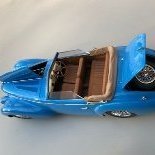
.thumb.jpg.ba34a9f6ddce411193946dbdcc7b5fe8.jpg)

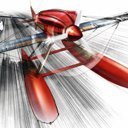
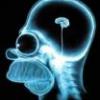

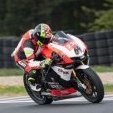
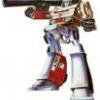
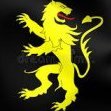
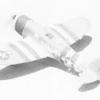

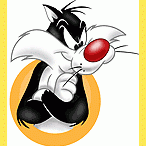





.thumb.jpg.d3635a7ef6507d35f372dd09671fe96f.jpg)
